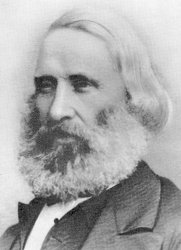Joseph Armstrong (engineer)
| Joseph Armstrong | |
|---|---|
 |
|
| Born |
21 September 1816 Bewcastle |
| Died | 5 June 1877 (aged 60) Matlock Bath |
| Nationality | British |
| Engineering career | |
| Discipline | Steam locomotive engineer |
| Employer(s) | Great Western Railway |
Joseph Armstrong (born Bewcastle, Cumberland, 21 September 1816, died Matlock Bath 5 June 1877) was a British locomotive engineer and the second locomotive superintendent of the Great Western Railway. His younger brother George and one of his sons ("Young Joe") also became outstanding engineers in the employment of the GWR.
After a spell in Canada, in 1824 Joseph's family took up residence in Newburn-on-Tyne, where his father Thomas became a bailiff to the Duke of Northumberland. Joseph attended Bruce's School in Newcastle, where Robert Stephenson had also been a pupil. In 1823 Robert Stephenson, in collaboration with his father George, had set up his locomotive works in the city. Moreover, Newburn was at one end of the Wylam Waggonway, where the sight of the famous locomotives Puffing Billy and Wylam Dilly must have inspired young Joseph's enthusiasm as an engineer. Newburn also had colliery railways worked by stationary engines, and it was at one of these, Walbottle Colliery, that Armstrong found his first employment.
As well as their acquaintance with the Stephensons, an important contact for the Armstrongs was the Methodist philanthropist Timothy Hackworth, who in 1825 became first locomotive superintendent of the brand-new . Through Hackworth, the teenage Armstrong may have gained experience driving locomotives on the Stockton and Darlington, and it has been suggested that Hackworth was probably a strong influence on his notably humane religious and social outlook when later in a position of great responsibility at Swindon Works on the Great Western.
Meanwhile, continuing to gain hands-on experience with the pioneering steam locomotives of the time, at the age of 20 (1836) Armstrong was employed by Edward Woods as a driver on Stephenson's Liverpool and Manchester Railway, moving four years later to a similar post on the Hull and Selby Railway, where he was promoted to the post of foreman and became acquainted with the forward-looking locomotive designs of John Gray. On following Gray to Brighton Works in 1845, Armstrong also got to know another pioneering locomotive engineer of the period, David Joy.
...
Wikipedia
